
Levi Olmstead


Consistent sales coaching makes a big difference in the effectiveness and efficiency of your sales representatives — managers who invest time and effort into coaching their employees can expect significantly better results.
One report showed that 60% of high-growth companies use sales coaching as part of their employee training programs.
Sales coaching isn’t a one-time training session or a brief motivational speech; it’s a continuous process that adapts to the seller’s needs, strengths, and weaknesses.
Whether you’re aiming to refine specific sales techniques, improve overall seller performance, or upskill your sellers, sales coaching is an effective strategy to drive success.
In this article, we’ll explore the idea of a sales coach, the primary goals of sales coaching, and examining different types and techniques to coach your sellers.
We’ll also break down what makes a sales coach effecttive, share practical tips, highlight excellent sales coaching programs, and share a few of the best knowledge and coaching tools to enable sales leaders.
Sales coaching is the act of working with and enabling sellers with the best practices, processes, and techniques to improve their performance and grow as sales leaders. The purpose of coaching your reps is to equip sellers with the skillsets they need to fix skill gaps, follow better sales practices, and improve their close rates.
Sellers can be internal sales leaders or external, third-party consultants brought in to coach the team. Internal sales coaches are training on how to best coach their sales reps and AEs, while external sales coaches provide an unbiased and outside perspective
Sales training, sales coaching, and sales mentoring may sound like they’re all cut from the same cloth, but they each have unique characteristics and serve distinct purposes in the realm of sales development.
Coaching aims to create an environment where team members feel motivated to get better at the craft of selling. An effective sales coach can boost the performance of middle- and low-performing reps by surfacing their strengths and refining their skills.
Without the two-way communication regular coaching brings, it can be tricky for managers to uncover behaviors that lead to poor results.
Sales coaching is about building a sales team’s self-confidence. A great coach creates an environment where people can learn from their mistakes through feedback and honest appraisal.
The best sales coaches are also facilitators — they bring out the best in their people by helping them see things from different perspectives and motivating them to succeed.
A quality sales coach must have an impressive ability to communicate with reps on both a basic and deeper level. They convey key messages about improving your sales process and closing more deals in a way that agents can truly understand and use.
The best sales coaches are also great communicators who can inspire confidence in their team members. They’ve likely spent some time as a rep themselves, so they know what techniques and skills their reps need to improve and how to inspire them to make those changes.

This type of coaching takes technical knowledge and emotional insight into what will be most motivating for each rep. It also requires patience from the coach, who must be willing to work with new or struggling agents until they get it right.
Sales is a field where adaptability and skill determine success. Effective sales coaching is crucial in honing these attributes, and various techniques have emerged in recent years. Each method, whether rooted in long-standing traditions or born from fresh insights, is designed to enhance the processes of sales teams, ensuring peak performance in every action taken.
Here are a few of the most popular sales coaching categories:
The cornerstone of feedback-based coaching is the continuous communication loop between a sales coach and a sales rep. It’s grounded in the principle that feedback, when delivered effectively, can pinpoint areas of strength and highlight areas in need of development. Salespeople thrive when they understand where they excel and where there’s room for growth. Regular one-on-one sessions, whether post-sales call or as part of a routine check-in, provide the environment for this mutual understanding.
But feedback shouldn’t be limited to a hierarchical structure. Peer-to-peer feedback sessions can also offer unique insights, as peers often understand the nuances and challenges of modern sales in ways that management might not. The key to successful feedback-based coaching is ensuring it’s delivered constructively, focusing not just on what went wrong, but also on actionable strategies for improvement and future growth.
Sales have entered the age of analytics, where numbers often speak louder than words. Data-driven coaching utilizes metrics and quantitative data to craft, adjust, and refine sales strategies. In this method, every decision is backed by hard data, from email response rates to the length of sales calls, providing an objective way for sales performance to be evaluated. Sales coaches using this method start by setting measurable goals and KPIs, ensuring that progress can be tracked in tangible terms.
But it’s not just about tracking raw numbers—interpreting them is also vital. Why did a certain email campaign result in higher open rates? What was different about the sales calls that led to conversions versus those that didn’t? By diving deep into the data, coaches can provide insights backed by evidence, making their coaching sessions far more impactful. Sales reps, in turn, can take comfort in the knowledge that their strategies and tactics are based on proven methodologies and not mere speculation.
The dynamics of sales roles are diverse, each presenting its unique challenges and demands. Role-based coaching understands this diversity and offers a tailored approach, focusing on the specific requirements of each sales role. This type of coaching necessitates a comprehensive understanding of each role’s requirements, encompassing everything from daily responsibilities to the overarching goals that must be achieved.
For instance, an account executive whose primary focus is maintaining and nurturing client relationships would require guidance on effective communication, long-term relationship building, and upselling techniques. On the other hand, a field sales representative might need coaching on managing a sales territory, effective in-person presentations, and rapid rapport building. Role-based coaching ensures that the guidance provided is not just generic but is actually relevant and directly applicable to the challenges and opportunities inherent in each specific sales role.

Sales coaching is more than just a buzzword—it’s the foundation upon which successful careers are built. Regardless of experience level, every salesperson can benefit from coaching. This guidance helps shape raw talent, refine existing skills, and drive consistent growth.
Let’s explore the key sales coaching techniques that have transformed sales coaching from a rudimentary process into an art form.
As the cornerstone of traditional sales coaching, one-on-one mentorship offers a personalized approach to skill development. Creating a space where the sales rep can openly discuss challenges, share experiences, and seek guidance fosters a direct line of communication with an experienced mentor.
This tailored guidance, paired with mutual respect and trust, often leads to faster skill acquisition, a clearer understanding of company culture, and alignment with organizational sales goals.
Constructive feedback is crucial for growth. By analyzing performance, whether from a live sales call or a training scenario, coaches can identify areas of improvement and excellence.
This objective review helps pinpoint skills that need honing and boosts morale by acknowledging and celebrating the areas where the sales rep excels.
Most modern companies know the value of a knowledge-sharing culture. Organizations rely on their highest-performing sales reps to document what is working for them, allowing other reps to learn from their team members who are finding success.
Those high performers may be asked to present an email that is working for them, create an SOP or process documentation on a sales script that has worked well for them, or to set up office hours to answer questions from their co-workers.
Below, you can see how organizations use Whatfix to share knowledge on CRM best practices and tutorials, directly in-app.

Goal-oriented coaching ensures a clear direction and purpose. By setting measurable targets, sales reps know exactly what’s expected of them.
Regular reviews of these goals keep sales reps accountable, provide motivation, and allow for realignment if market conditions or company objectives change.
Collective learning environments can be hugely beneficial. Group workshops facilitate knowledge sharing, where experiences, successes, and challenges are discussed openly.
Through peer learning, sales reps can gain diverse perspectives, pick up new tactics, and learn from the team’s collective experience.
Observing a seasoned sales rep in action offers invaluable insights. Shadowing provides a real-time learning experience, allowing newer reps to see best practices in action.
Post-shadowing discussions can further deepen understanding, as both the senior rep and the learner can dissect the interaction, extracting key learning points.
Identifying areas where a sales rep needs improvement is crucial. A skill gap analysis provides a clear picture of where the rep stands regarding skill proficiency.
Once identified, targeted training can be provided to bridge these gaps, ensuring your sales rep is well-rounded and adept in all required areas.
Get a free skill gap analysis template to customize for your organization now!
Scenario-based learning thrusts sales reps into potential real-world situations. Unlike role-playing, which is more scripted, this is about thinking on one’s feet.
It trains reps to adapt, innovate, and tackle unexpected challenges, making them more resilient and adaptable in live sales situations.
Sales is an ever-evolving field. As such, one-time feedback isn’t enough. Establishing a continuous feedback loop ensures that sales reps are constantly learning, adapting, and improving.
It fosters a culture of continuous improvement, where both successes and failures are seen as learning opportunities.
If your company isn’t using sales coaching strategies, your sales team is leaving money on the table.
To help your reps develop the skills they need to crush their sales quotas, use these 12 coaching techniques.
You can speed up your team’s learning process by organizing workshops and skill-shares where your successful reps share what makes them so successful.
These sessions will allow your reps to share ideas about how they perform their jobs effectively. This will not only help them improve their own performance, but also make them better mentors for other team members.
You’re likely already meeting with your reps for 1:1s, so you can use at least some of that time to specifically focus on coaching. Consistent coaching sessions can make coaching more effective and improve rep satisfaction, so earmark at least one of your monthly 1:1s as a coaching session and strive to increase the frequency.
To get started with roleplaying, create a scenario where you act as a prospect with a common objection. For example, if your reps are struggling to respond to pricing objections, you can play the part of the prospect, study the rep’s response, and coach them on effectively explaining your product’s value.
Sales reps have to know what’s expected of them, whether in terms of total revenue or how many accounts they’re expected to win each month. Setting and communicating expectations are part of building trust and respect, and it’s the foundation for ensuring everyone is on the same page and working toward the same goals. Your expectations don’t need to be excessively formal, but they need to be clear, and you both need to agree to them.
Every rep tracks their pipeline differently, so it’s critical to develop an effective, transparent method for tracking progress. Make sure you’re using your CRM to check how long each rep spends in each stage of your buying process and how many meetings they’re booking every week, month, and year.
These numbers can help you spot areas where a rep could use improvement. For example, if one of your reps has an unusually high number of deals stuck in the “proposal received” stage, you can coach them on how to follow up during the final stages so they can close more deals.
In a coaching culture, teams learn through collaboration. Sharing successes and learning from each other’s mistakes allows sales teams to become more than the sum of their parts — it helps them grow and develop a cohesive team.
You can start building a coaching culture by making sure your reps have easy access to one another, have a few shared goals, are held accountable together, and are rewarded together. For example, if your reps share goals, like hitting a particular revenue target or closing a certain number of deals, it gets them thinking about how their performance measures up and how they can help others improve.
Trying to fix everything at once is one of the biggest mistakes sales managers can make. When coaching your reps, don’t overload them with information that will overwhelm them. Focus on one or two things to start so reps have the best chance of success.
For example, if you’re coaching your reps on adding new prospects to their pipeline, focus on making sure they understand how to use LinkedIn effectively, including how to set up a LinkedIn profile and politely message prospects. Once they’ve shown mastery of LinkedIn, start working on developing reusable email templates inside your CRM.
Tapping into competitive streaks in reps can deliver positive results as reps strive to reach the top of the leaderboard. It’s also psychologically proven to keep all humans interested in something — when we “level up” in a game, our brains get dopamine, which activates the reward pathway in our brain and tells us to repeat the action to get the reward again. This tactic is called gamification because it uses incentivized “games” to keep people motivated.
Adding gamification elements doesn’t have to be a big production — it can be as simple as creating a system where reps earn points when they display competence in the areas they’ve been tasked with improving. You can also create badges sales reps can earn and display on their Slack profile or at their desk when they close a certain number of sales over their monthly or quarterly target.
Make sure your reps understand how to speak to your sales enablement tools, like PowerPoint presentations, one-sheets, and other documentation such as playbooks and knowledge bases. For example, use one of your peer-to-peer sessions to walk through each piece of collateral to show your reps how others have used them successfully.
Below is an example of a sales team leveraging their knowledge base to share best practices and documentation across the team:
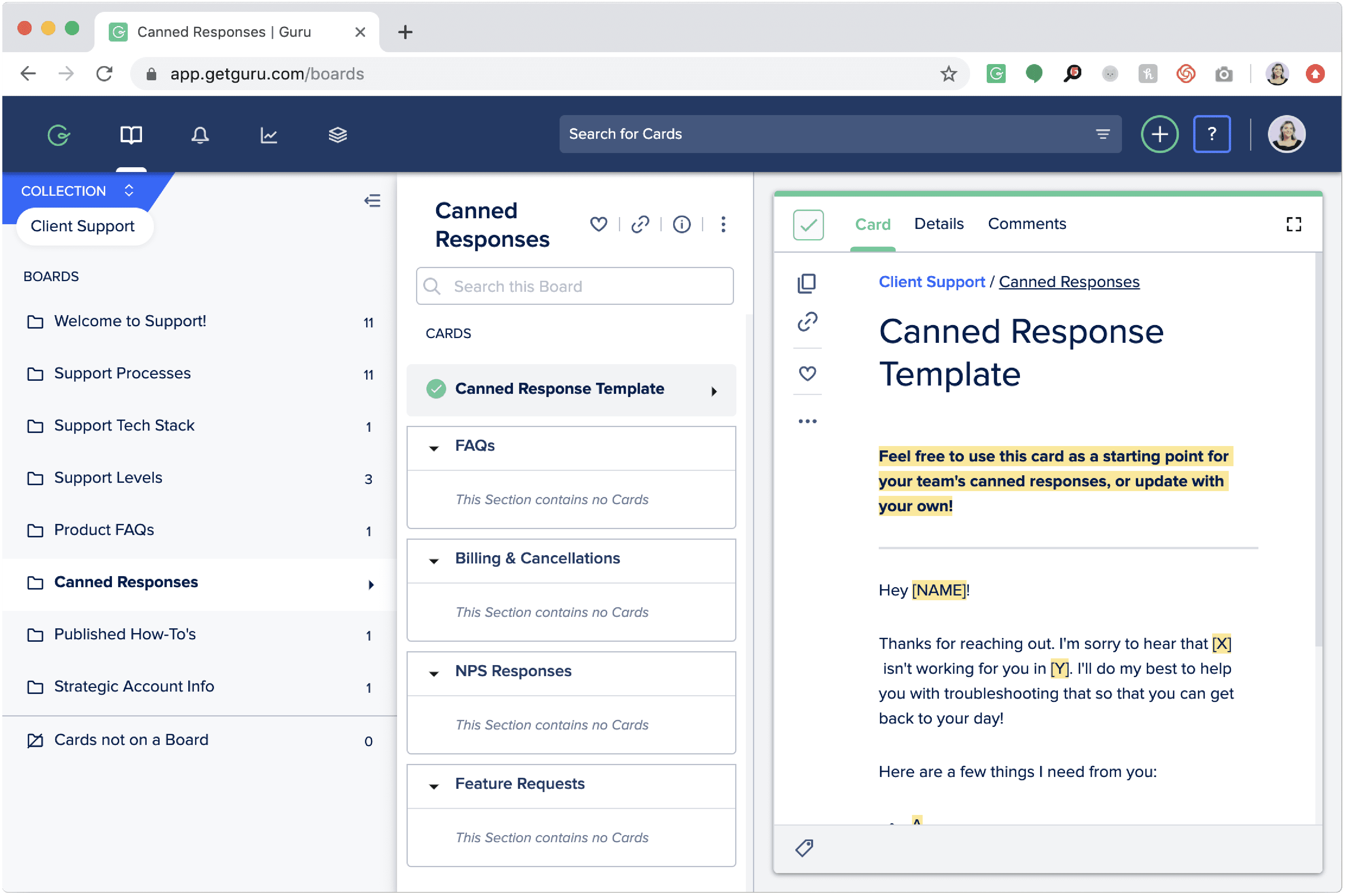
Use your sales data to figure out where you should focus and keep a close eye on your reps’ metrics. Look for areas where they need improvement and keep in mind that sales teams with well-defined pipeline KPIs and expectations have more success reaching their sales quotas. For example, if you see an unusual number of closed/lost accounts in your CRM for a rep, review their interactions with prospects to see where they might be faltering.
Treating all your reps the same way doesn’t work. Your reps have different strengths and weaknesses and need to be coached as such. For example, if your sales rep is struggling with confidence, it won’t help if you coach them on motivation.
Work with each rep individually to determine if their issues are behavior-, motivation-, or ability-based, then develop a personalized action plan to keep you and your reps focused on their individual needs.
Some sales managers focus only on their weakest sales reps, but coaching your middle-of-the-road and top performers can reap several benefits. All of your reps have room to improve their leadership skills and confidence levels and reach their full potential. Coaching all of your reps can also improve your bottom line — gains in performance across your whole team can positively impact your win rates and quota achievement.
In the intricate world of sales, mastering the art of persuasion, understanding complex products, and navigating demanding client relationships are paramount. But how do some of the world’s most renowned companies ensure their sales teams are primed for success? The answer lies in their innovative sales coaching programs.
These initiatives go beyond just training; they elevate individuals from beginners to experts while also helping professionals continuously improve their approach. By examining the details of sales coaching programs used by industry leaders, we can gain valuable insights into the powerful blend of traditional coaching methods and innovative techniques that distinguish top sales teams.
Oracle’s Deal Coaching Program is focused on advancing the skills of its sales teams around the world. Recognizing that its sales force sells complex technology solutions to a variety of businesses in diverse industries, the company has created a coaching program to help its sales reps refine their strategies and techniques for each specific deal.
Features and highlights of Oracle’s Deal Coaching Program:
With the integration of AI and cognitive learning in its sales coaching, IBM aims to improve the learning experience of its sales reps and increase their efficiency. Their program is driven by digital technology and aims to offer personalized learning paths for its sales teams.
Features and highlights of IBM’s Cognitive Sales Learning:
There are many different types of training tools that help sales managers coach their reps – but a few of the best-of-breed sales coaching tools include:
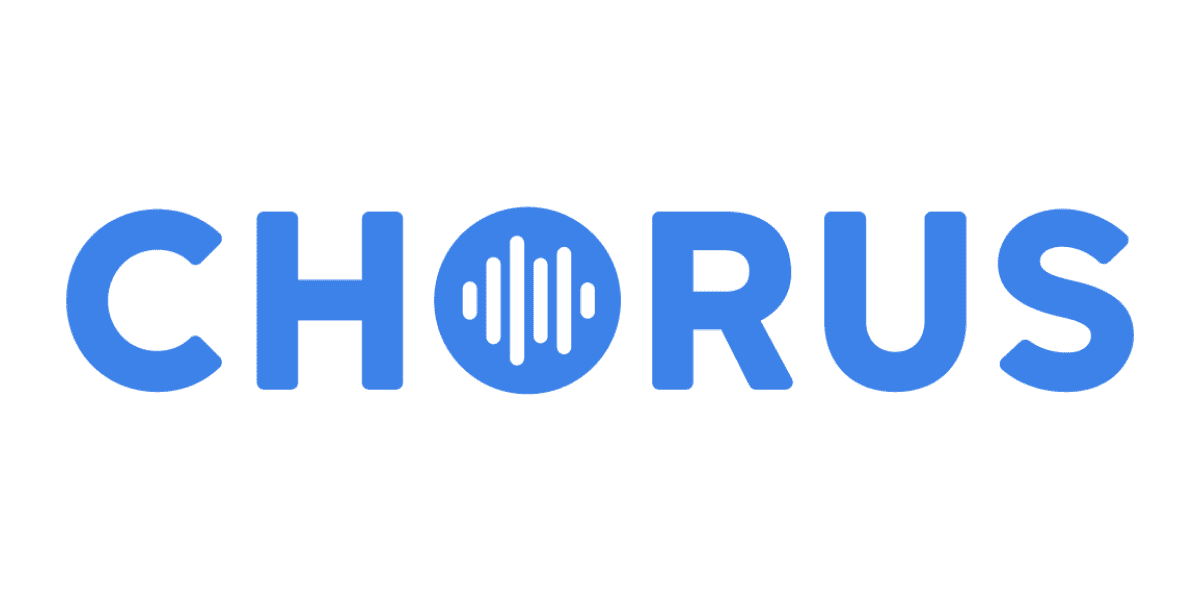
G2 Rating: 4.5 out of 5 stars
Price: Contact for pricing
Chorus is a conversation analytics tool designed to record, transcribe, and analyze sales calls and meetings. Its main strength lies in analyzing sales conversations using AI, allowing teams to understand customer needs better and align sales strategies. With collaboration features, sales teams can share insights, learn from top performers, and offer personalized coaching to drive improvement.
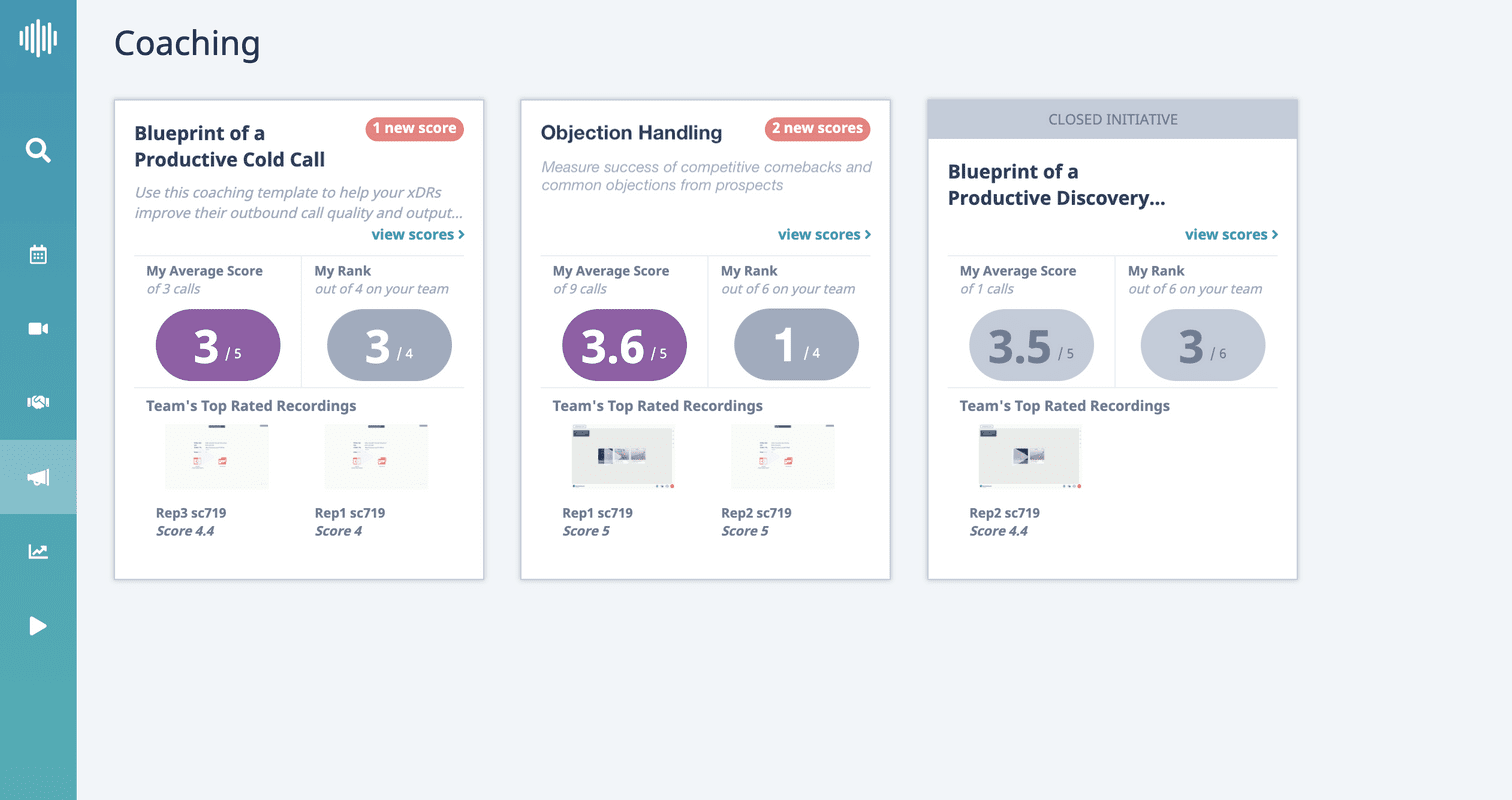
Key Features:
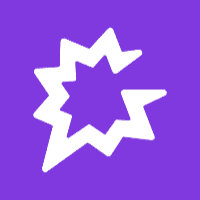
G2 Rating: 4.7 out of 5 stars
Price: Contact for pricing
Gong is a sales enablement platform that utilizes artificial intelligence to analyze sales calls and meetings, providing insights and feedback to sales reps and managers. This platform offers a real-time view of customer interactions, helping sales teams understand what is working and what isn’t. By harnessing data-driven insights, Gong allows for personalized coaching, improves sales effectiveness, and aligns sales teams with the strategies that are most likely to win deals.
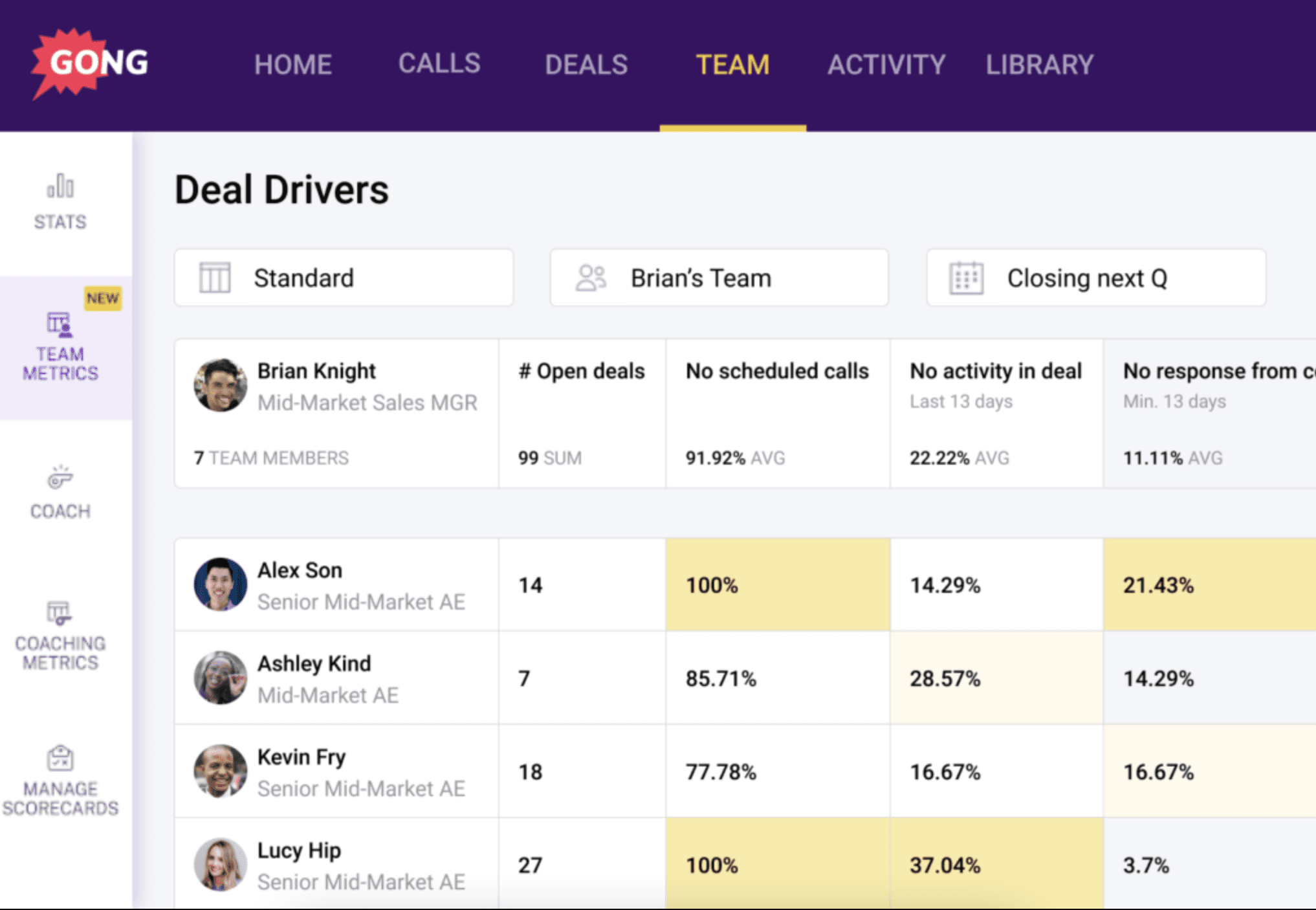
Key Features:

G2 Rating: 4.7 out of 5 stars
Price: Contact for pricing
Lessonly by Seismic is a learning and coaching platform that enables teams to move quickly, grow consistently, and deliver on their goals. It offers a simple way to deliver training materials and assignments to sales reps, combined with tracking and reporting functionalities. With custom learning paths and ongoing coaching options, it encourages continuous growth and alignment within sales teams.
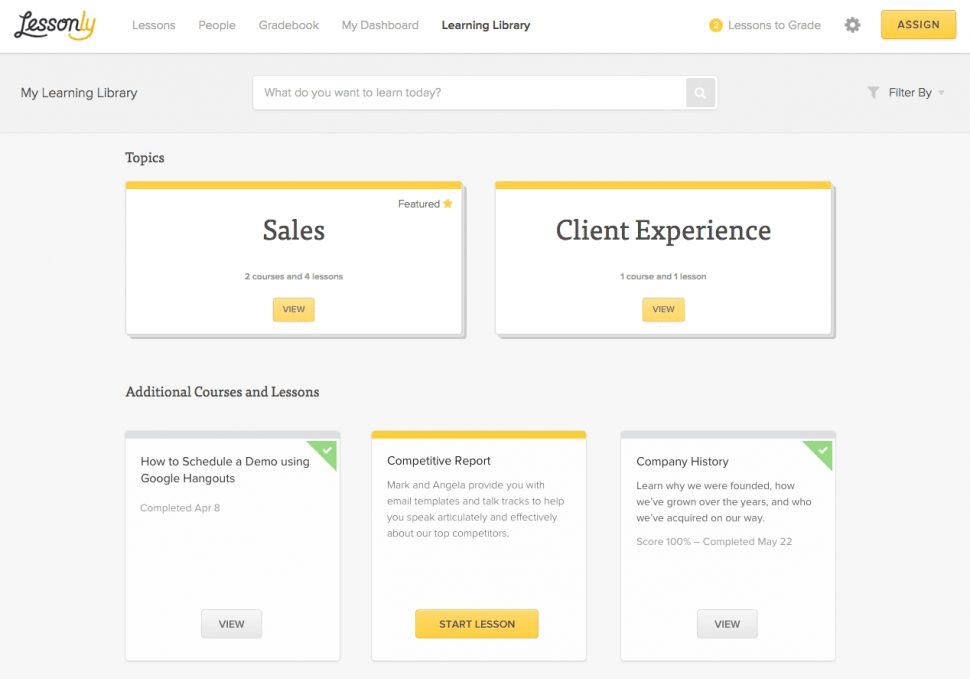
Key Features:

G2 Rating: 4.4 out of 5 stars
Price: Contact for pricing
Brainshark provides comprehensive solutions for sales training, coaching, and content. Offering a range of onboarding tools and continuous training options helps sales teams stay aligned and well-trained. The coaching features enable managers to send video challenges and other assignments to reps, encouraging continuous learning and improvement.
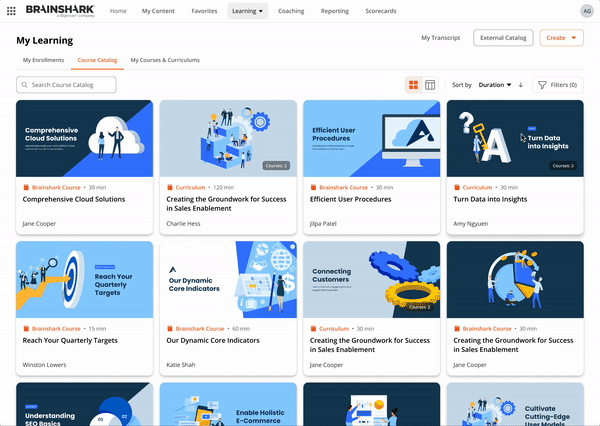
Key Features:
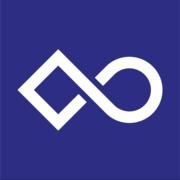
G2 Rating: 4.4 out of 5 stars
Price: Contact for pricing
Showpad Coach focuses on aligning sales teams with marketing content and offering personalized coaching experiences. It combines industry-leading training technology with innovative content solutions to improve sales effectiveness. Sales managers can provide targeted coaching and training, and there are also various tools to assess and analyze sales rep performance.
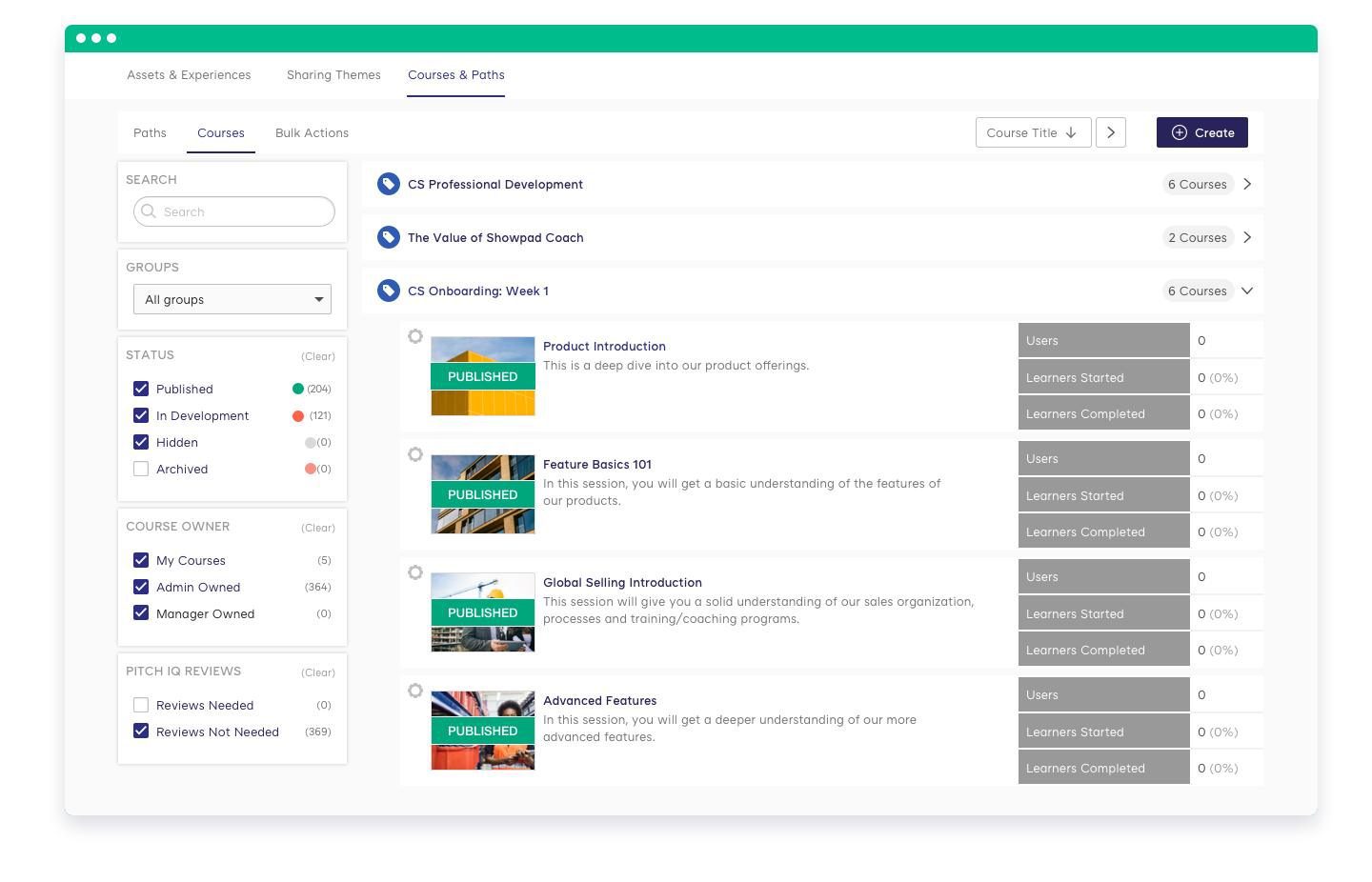
Key Features:

G2 Rating: 4.8 out of 5 stars
Price: Contact for pricing
Whatfix is a leading digital adoption platform (DAP) that helps businesses provide in-app guidance and support across applications and software products. For sales teams, this translates into tailored onboarding, training, and real-time support. By offering contextual, step-by-step guidance directly within the tools sales reps use, Whatfix reduces the learning curve and increases productivity. It also provides analytics to understand user behavior and optimize content, enabling managers to offer specific coaching and feedback to improve performance.
]Whatfix adds a unique angle to sales coaching by focusing on digital adoption and in-app guidance. Providing training and support within the context of the tools and platforms sales reps are using fosters a more hands-on learning experience and helps ensure that knowledge is applied practically. This makes it a valuable addition to the tools that sales organizations can consider to enhance their coaching and enablement efforts.

Key Features:
For your sales team to be most effective, they should be able to complete their tasks in the shortest amount of time possible.
You can also use Whatfix’s digital adoption tools to increase your sales reps’ productivity by up to three times by eliminating the time spent searching for help and support information.
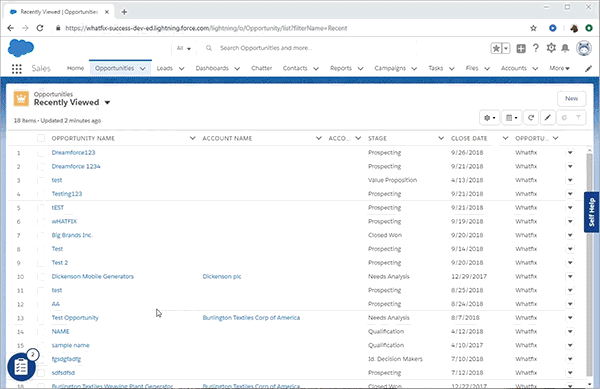
Whatfix allows organizations to:
Learn more about how Whatfix improves enterprise sales teams’ performance and productivity now!

Thank you for subscribing!